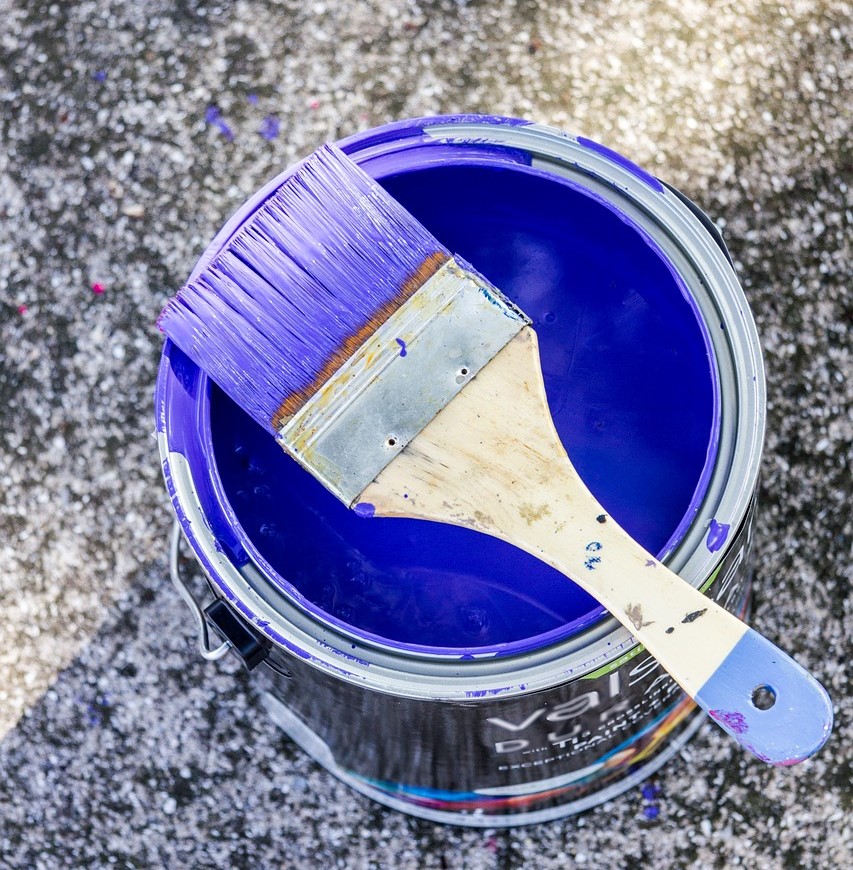A Brief Guide to Paint
 In today's world, there are a seemingly endless number of options available when it comes to the "simple" task of selecting a paint. Not only is there the obvious question of color, but you must also decide on which type and finish would best suit your application. Luckily, we're here to help! In this post you will find a brief guide on the various styles of paint, including terms such as oil-based, matte, semigloss, and... milk?
In today's world, there are a seemingly endless number of options available when it comes to the "simple" task of selecting a paint. Not only is there the obvious question of color, but you must also decide on which type and finish would best suit your application. Luckily, we're here to help! In this post you will find a brief guide on the various styles of paint, including terms such as oil-based, matte, semigloss, and... milk?
Oil and Water Don't Mix
The most fundamental quality to be aware of when selecting a paint for your home is whether it is oil-based or water-based. When it comes to painting a home's interior, water-based latex paint has become the most widely used due to its ease of application, simple clean-up, and quick drying. On the other hand, oil-based paints offer increased durability and shine at the cost of longer drying times, more difficult cleaning, and a strong, unpleasant odor during drying. In fact, working with oil-based paints generally requires thorough ventilation in order to prevent irritation to your eyes and airways.
Another type of water-based paint, called milk paint, has seen an increase in popularity in the last several years due to its unique appearance. Named after the fact that it contains the milk protein casein, this type of paint has actually been in use for thousands of years. Milk paint offers extreme durability and is made of all-natural ingredients, although the product has a limited shelf-life and can be more expensive than typical paint products. It is often used to provide an antique or rustic look to furniture due to its ability to show individual brushstrokes.
Finish the Job
Now that you know the difference between types of paint, you have to select a finish, which refers to how shiny a paint will appear once dry. Generally, less shiny finishes are better at hiding imperfections in the surface, but are harder to clean due to their decreased durability. Oil-based paints will usually provide a greater level of shine than water-based paints. Here are some of the most common finishes, listed from least shiny to most shiny:
1. Matte/Flat: This is most commonly applied to walls and ceilings in low-traffic areas. Reflects very little light, which hides any bumps, cracks, or other imperfections in the wall, but cannot be rubbed clean.
2. Eggshell: Slightly shinier and easier to clean, eggshell is a good choice for interior hallways due to greater reflection of light.
3. Satin: Provides even more shine while also giving the surface a smooth and velvety appearance. Commonly used on window and door trim, but also a good option for bedroom or bathroom walls.
4. Semigloss: Mostly applied to baseboards, molding, cabinets, and built-in shelving in bathrooms and kitchens. Quite shiny and durable, but requires careful preparation and application in order to avoid noticeable imperfections.
5. Glossy: Use this finish on things that you want to stand out, such as trim, cabinets, and furniture. Appears almost like a coating of plastic or vinyl due to the shiny, smooth surface.
- Cheryl Bourland's blog
- Login or register to post comments
 Google+
Google+


 Information Deemed Reliable but Not Guaranteed. CENTURY 21 H.S.V. Realty is licensed in the state of Arkansas. CENTURY 21 and the CENTURY 21 Logo are registered service marks owned by Century 21 Real Estate LLC. H.S.V. Realty, Inc. fully supports the principles of the Fair Housing Act and the Equal Opportunity Act. Each franchise is independently owned and operated. Any services or products provided by independently owned and operated franchisees are not provided by, affiliated with or related to Century 21 Real Estate LLC nor any of its affiliated companies.
Information Deemed Reliable but Not Guaranteed. CENTURY 21 H.S.V. Realty is licensed in the state of Arkansas. CENTURY 21 and the CENTURY 21 Logo are registered service marks owned by Century 21 Real Estate LLC. H.S.V. Realty, Inc. fully supports the principles of the Fair Housing Act and the Equal Opportunity Act. Each franchise is independently owned and operated. Any services or products provided by independently owned and operated franchisees are not provided by, affiliated with or related to Century 21 Real Estate LLC nor any of its affiliated companies.